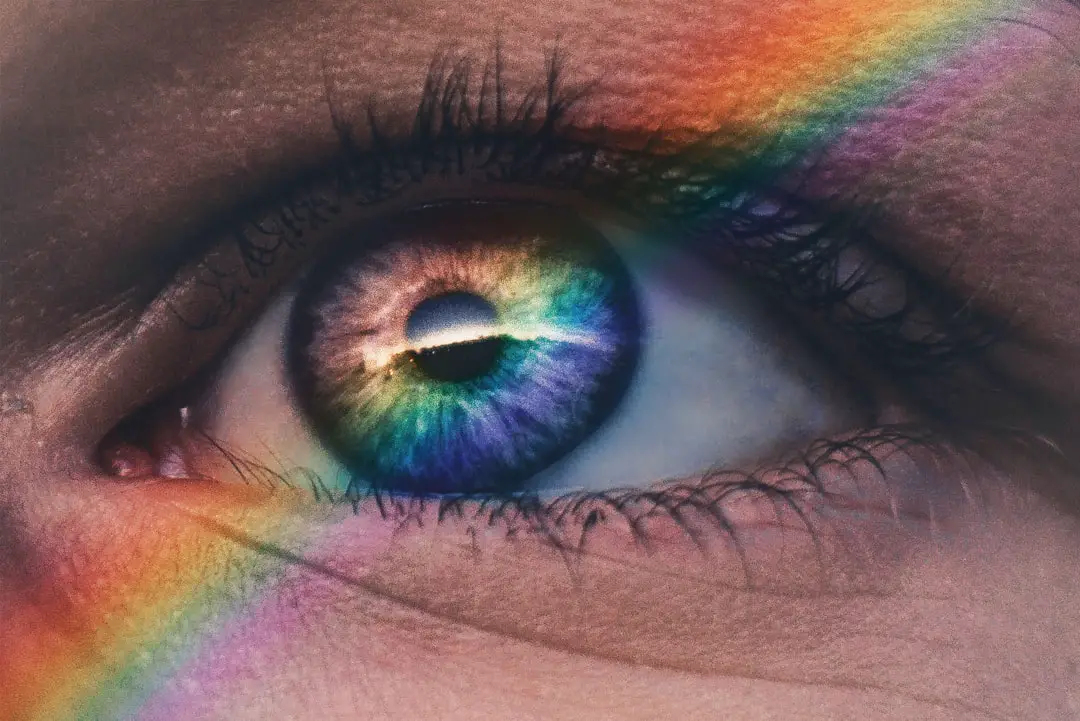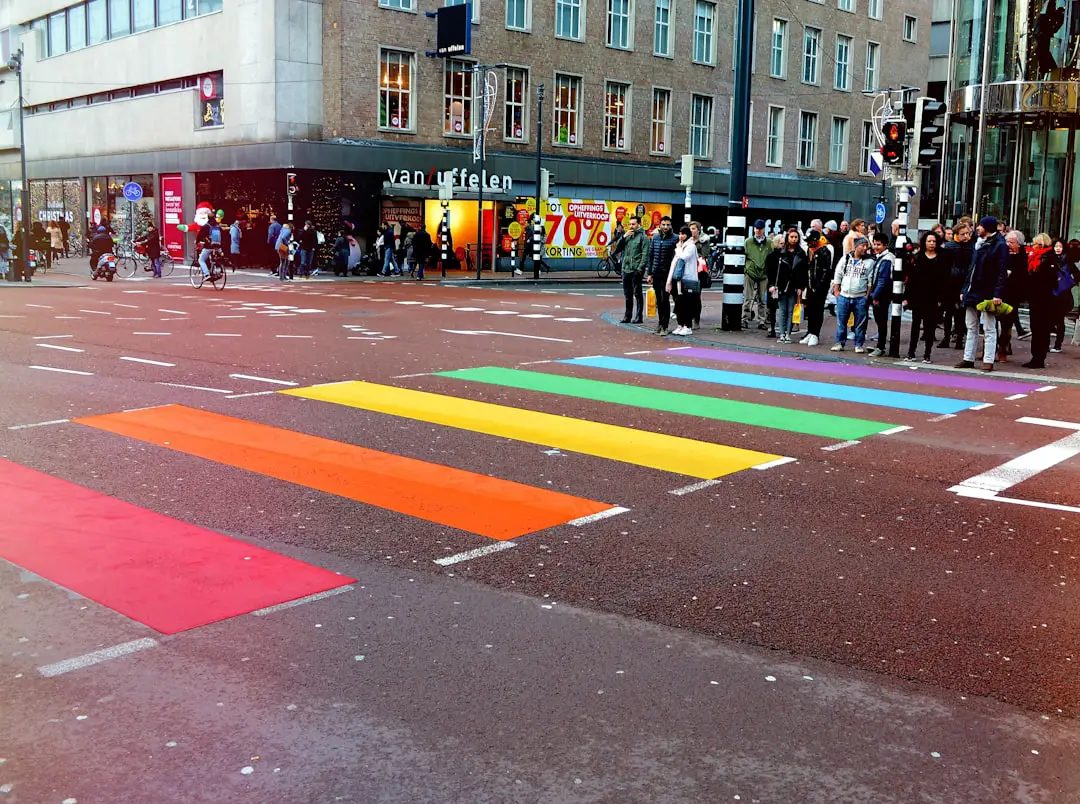Support our educational content for free when you purchase through links on our site. Learn more
How to Say All 7 Rainbow Colors in Spanish 🌈
Have you ever looked up at a vibrant rainbow and wondered how to express its beautiful colors in Spanish? 🌈 Well, you’re in for a treat! In this article, we’ll explore not just the names of the rainbow colors, but also how to use them in everyday conversations, their cultural significance, and some fun activities to enhance your learning experience.
Imagine standing in front of a stunning mural, bursting with colors, and being able to describe it fluently in Spanish. Whether you’re planning a trip to a Spanish-speaking country or simply want to impress your friends, knowing how to articulate these colors will add a splash of vibrancy to your language skills. So, let’s dive in and discover the seven colors of the rainbow in Spanish!
Key Takeaways
- The Colors of the Rainbow: Learn the Spanish names for the seven colors: rojo, naranja, amarillo, verde, azul, índigo, and violeta.
- Cultural Significance: Understand how colors symbolize different meanings in Spanish-speaking cultures.
- Practical Usage: Discover how to incorporate colors into everyday conversations and descriptions.
- Fun Learning Activities: Engage with interactive methods like scavenger hunts and art projects to reinforce your learning.
- Pronunciation Tips: Master the correct pronunciation for each color to enhance your speaking skills.
Ready to add some color to your Spanish vocabulary? Check out our recommended resources for Spanish vocabulary books and color flashcards to help you on your journey! 🌟
Table of Contents
- Quick Tips and Facts
- The Colors of the Rainbow in Spanish: A Complete Guide 🌈
- Understanding Color Vocabulary in Spanish 🎨
- Fun Facts About Colors in Spanish Culture 🇪🇸
- How to Use Colors in Everyday Spanish Conversations 💬
- Colorful Idioms and Expressions in Spanish 🗣️
- The Science Behind Colors: A Spanish Perspective 🔬
- Exploring Color Symbolism in Spanish-speaking Countries 🌍
- Engaging Activities to Learn Colors in Spanish 🎉
- Background on Color Terminology in Spanish 🏛️
- Conclusion
- Recommended Links
- FAQ
- Reference Links
Quick Tips and Facts
-
Colors of the Rainbow in Spanish: 🌈
- Red – Rojo
- Orange – Naranja
- Yellow – Amarillo
- Green – Verde
- Blue – Azul
- Indigo – Índigo
- Violet – Violeta
-
Fun Fact: The word for rainbow in Spanish is “arcoíris”!
-
Usage: Colors are often used as adjectives in Spanish, which means they typically follow the noun they describe. For example, “la casa roja” means “the red house.”
-
Learning Tip: Use flashcards or colorful games to make learning colors fun! 🎉
The Colors of the Rainbow in Spanish: A Complete Guide 🌈
Let’s dive deeper into the colors of the rainbow and how to use them in everyday conversations. Learning these colors is not just about memorizing words; it’s about bringing vibrancy to your Spanish vocabulary!
The Rainbow Colors List
| Color in English | Color in Spanish | Example Sentence |
|---|---|---|
| Red | Rojo | La manzana es roja. (The apple is red.) |
| Orange | Naranja | El sol es naranja. (The sun is orange.) |
| Yellow | Amarillo | El plátano es amarillo. (The banana is yellow.) |
| Green | Verde | El césped es verde. (The grass is green.) |
| Blue | Azul | El cielo es azul. (The sky is blue.) |
| Indigo | Índigo | La luz es índigo. (The light is indigo.) |
| Violet | Violeta | Las flores son violetas. (The flowers are violet.) |
Why Learn Colors? 🎨
Colors are essential in Spanish vocabulary because they help you describe objects, emotions, and even cultural nuances. Knowing how to express colors can enhance your conversations, whether you’re shopping, decorating, or simply chatting with friends.
Understanding Color Vocabulary in Spanish 🎨
Gender and Number Agreement
In Spanish, colors are adjectives and must agree with the nouns they modify in gender and number. Here’s how it works:
- Masculine Singular: Rojo (red)
- Feminine Singular: Roja (red)
- Masculine Plural: Rojos (reds)
- Feminine Plural: Rojas (reds)
Example Sentences:
- El coche es rojo. (The car is red.)
- Las casas son rojas. (The houses are red.)
Common Color Variations
Beyond the basic colors, you’ll encounter variations that can add depth to your vocabulary:
| Color Variation | Spanish Term |
|---|---|
| Light Blue | Celeste |
| Dark Blue | Azul oscuro |
| Pink | Rosa |
| Brown | Marrón |
| Gray | Gris |
Fun Facts About Colors in Spanish Culture 🇪🇸
Colors often carry cultural significance. For instance, in many Spanish-speaking countries:
- Red symbolizes love and passion.
- White represents purity and peace.
- Green is associated with hope and nature.
These meanings can influence how colors are used in art, fashion, and even celebrations. For example, during Día de los Muertos, vibrant colors are used to honor the deceased, showcasing the rich tapestry of Spanish culture.
How to Use Colors in Everyday Spanish Conversations 💬
Integrating colors into your conversations can be as easy as pie! Here are some practical tips:
-
Describe Objects: Use colors to describe items around you.
- Me gusta el vestido azul. (I like the blue dress.)
-
Ask Questions: Engage others by asking about their preferences.
- ¿Cuál es tu color favorito? (What is your favorite color?)
-
Shopping: Colors are crucial when discussing products.
- ¿Tienen zapatos rojos? (Do you have red shoes?)
Practice Makes Perfect
Try to incorporate colors into your daily Spanish practice. Whether you’re describing your outfit or the food you’re eating, practice will help solidify your understanding.
Colorful Idioms and Expressions in Spanish 🗣️
Spanish is rich with idiomatic expressions that involve colors. Here are a few to spice up your conversations:
- Verde de envidia: (Green with envy) – Used to describe someone who is very envious.
- Estar en la luna: (To be in the moon) – Means to be daydreaming or distracted.
- Ver todo negro: (To see everything black) – To have a pessimistic outlook.
These expressions not only enhance your vocabulary but also give you insight into the cultural nuances of the language.
The Science Behind Colors: A Spanish Perspective 🔬
Did you know that colors can affect emotions and perceptions? In psychology, colors are believed to evoke certain feelings. For example:
- Blue can create a sense of calm.
- Red can increase energy levels.
Understanding these associations can help you communicate more effectively in Spanish, especially when discussing art or design.
Exploring Color Symbolism in Spanish-speaking Countries 🌍
Color symbolism varies across cultures. Here are some examples:
| Country | Color | Symbolism |
|---|---|---|
| Mexico | Yellow | Celebration and joy |
| Spain | Red | Courage and strength |
| Argentina | Blue | Freedom and peace |
These meanings can enhance your understanding of cultural practices and traditions in Spanish-speaking countries.
Engaging Activities to Learn Colors in Spanish 🎉
Learning colors doesn’t have to be boring! Here are some fun activities:
- Color Scavenger Hunt: Find objects around your home or classroom that match specific colors.
- Art Projects: Create a colorful collage using magazine cutouts and label each color in Spanish.
- Flashcard Games: Use flashcards to quiz yourself or a friend on color names and their meanings.
These activities can make learning interactive and enjoyable!
Background on Color Terminology in Spanish 🏛️

The term for colors in Spanish, “colores,” comes from the Latin word “color,” which means hue or tint. Understanding the historical context of color terminology can deepen your appreciation for the language and its evolution.
As you learn Spanish, remember that colors are not just words; they represent emotions, culture, and identity.
Conclusion

Incorporating colors into your Spanish vocabulary is a vibrant way to enhance your language skills. Whether you’re shopping, decorating, or simply chatting, knowing how to express colors will enrich your conversations. 🌈
For more insights on Spanish vocabulary, check out our articles on Spanish Vocabulary and Spanish Language Learning.
Recommended Links
FAQ

Q: How do I remember the colors in Spanish?
A: Use flashcards, create colorful charts, or associate colors with objects around you!
Q: Are there any apps to help learn colors in Spanish?
A: Yes! Apps like Duolingo and Babbel offer engaging ways to learn vocabulary, including colors.
Reference Links
- Learning Spanish for Beginners: Colors of the Rainbow
- Babbel: Colors in Spanish
- Easy Spanish YouTube Channel
Now, go out there and paint your Spanish conversations with all the colors of the rainbow! 🌈✨
Conclusion

In conclusion, learning how to say the colors of the rainbow in Spanish is not just about memorizing vocabulary; it’s about enriching your language skills and cultural understanding. 🌈 From rojo (red) to violeta (violet), each color adds a splash of vibrancy to your conversations.
Summary of Positives and Negatives
-
Positives:
- Enhances Vocabulary: Knowing colors helps in everyday conversations, shopping, and descriptions.
- Cultural Insight: Colors carry significant cultural meanings in Spanish-speaking countries.
- Engaging Learning Activities: Fun methods like flashcards and art projects make learning enjoyable.
-
Negatives:
- Gender Agreement Complexity: The need to adjust colors based on gender and number can be confusing for beginners.
- Regional Variations: Some colors may have different names or meanings in various Spanish-speaking regions.
Overall, we confidently recommend incorporating color vocabulary into your Spanish learning journey. It’s a colorful way to express yourself and connect with the rich tapestry of Spanish culture!
Recommended Links
- 👉 Shop Spanish Language Learning Resources:
FAQ

What are the colors of the rainbow in Spanish, in order, starting with red?
The colors of the rainbow in Spanish, in order, are:
- Rojo (Red)
- Naranja (Orange)
- Amarillo (Yellow)
- Verde (Green)
- Azul (Blue)
- Índigo (Indigo)
- Violeta (Violet)
This order corresponds to the visible spectrum of light, making it easy to remember!
How do you pronounce the Spanish words for the colors of the rainbow?
Pronunciation tips:
- Rojo – /ˈro.xo/
- Naranja – /naˈɾan.xa/
- Amarillo – /amaˈɾi.ʝo/
- Verde – /ˈbeɾ.ðe/
- Azul – /aˈθul/ (Spain) or /aˈzul/ (Latin America)
- Índigo – /ˈin.di.ɡo/
- Violeta – /bjoˈle.ta/
Practicing these pronunciations can help you sound more fluent!
What is the Spanish vocabulary for describing a beautiful rainbow?
To describe a beautiful rainbow, you might say:
- “Un arcoíris hermoso.” (A beautiful rainbow.)
- “El arcoíris brilla con colores vibrantes.” (The rainbow shines with vibrant colors.)
Using adjectives like hermoso (beautiful) and brillante (bright) can enhance your descriptions.
Can you learn the colors of the rainbow in Spanish with a song or rhyme?
Absolutely! Many children’s songs and rhymes incorporate colors, making them memorable. For example, songs like “El Arcoíris” can help reinforce color vocabulary through melody and repetition.
How do you say “rainbow” in Spanish, and are there any interesting idioms related to it?
“Rainbow” in Spanish is “arcoíris.” An interesting idiom is “ver todo negro,” which means to see everything negatively, contrasting with the positive imagery of a rainbow.
What are some common phrases used to describe the colors of a rainbow in Spanish?
Common phrases include:
- “El arcoíris tiene siete colores.” (The rainbow has seven colors.)
- “Los colores del arcoíris son vibrantes.” (The colors of the rainbow are vibrant.)
These phrases can be useful for both conversation and writing.
Read more about “🌟 Yellow in Spanish Color: 15 Vibrant Ways to Use “Amarillo” …”
Are there any cultural differences in how rainbows and their colors are perceived in Spanish-speaking countries?
Yes! In some cultures, rainbows symbolize hope and new beginnings, while in others, they may represent good luck. For example, in Mexico, rainbows are often associated with the celebration of life and nature.
Reference Links
- Learning Spanish for Beginners: Colors of the Rainbow
- Babbel: Colors in Spanish
- Easy Spanish YouTube Channel
- Wikipedia: Color Symbolism
By exploring these resources, you can deepen your understanding of colors in Spanish and their cultural significance. Happy learning! 🌈✨
